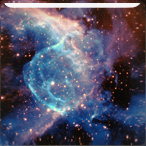

![]() The story of a medium: record of the last séance
The story of a medium: record of the last séance
 |
Download file m4a (QuickTime Player) 81.8 MB |  |
(to download right click and select download) |
| Download file wmv (Windows Media Player) 74.6 MB |
A laboratory analysis
The recording of the last séance shows the same characteristics found in the previous one. In particular, the correlations between the voice of the spirit invading the field and the voice of Mariòl repeating the thoughts of that spirit are even more evident. Moreover, listening to the recording with earphones or with a stereo system, at some points the movement of Mariòl's voice in the space of the room in which the recording was made can be perceived very well.
On the issue 2001/4 of Luce e Ombra (page 389) an article was published (the author of which, Daniele Gullà, is an electronic engineer and electroacoustic expert), entitled «Analisi di laboratorio di una presunta manifestazione a voce diretta con la medianità di Urbino Fontanelli» (Laboratory Analysis of an Alleged Manifestation in Direct Voice with the Mediumship of Urbino Fontanelli). This article, very interesting even from a technical point of view, illustrates the methods and devices used in the analysis carried out in that year on the voices recorded during the sessions of March 14 and 28, 1952, among which Mariòl's voice was prevailing. The voice of the medium Fontanelli, taken from the recording of the conversation in 1978, was also analyzed. The article is accompanied by several graphics taken from the computerized investigations on the voices, carried out with professional software available at the time.
The conclusions in the article summary deserve to be quoted: «Perhaps for the first time in the history of parapsychology, a very in depth electroacoustic analysis was carried out on a case of direct voice experienced in first person by Silvio Ravaldini. The analysis of the material, recorded on a magnetic support, has highlighted numerous structural anomalies, when compared to a normal human speaking voice. The aforementioned anomalies invest all the measured parameters; from the values of the Fundamental Frequency (position and time trend), to the Formants (positioning in the IPA tables and spectral density), to the Spectral Variations in the Melodic Pattern and the associated energy. Through computer programs of the latest generation it was possible to virtually reconstruct what should be the possible phonatory model (shape and size of the resonators) that generated the analyzed direct voice. The images of the vocal tract reconstructed on the computer show an absolutely anomalous result compared to those, provided and predictable, of a normal human being. Its dimensions are very variable during the elocution and present particular shapes not detectable in any human being. The model created by the software seems similar to that of a funnel, with a pump effect, with a large front opening (much wider than a normal phonation organ) and a short phonatory tube, corresponding to about half of a child's one. The analysis is completed with a graphic table report, showing the percentage ratios of the detected anomalies and their standard deviations from normal human speech. The writing ends by highlighting the impossibility that these sounds may come from a common human acoustic duct, since their forensic and spectral features deviate beyond any foreseeable standard».
On advising those who are interested in reading the full article, I would like to underline how the acoustic anomalies of Mariòl's voice, compared to any human voice (authentically feminine or imitating a female voice), are clearly evident when listening to the recordings. Her voice, in fact, never breathes, and definitely behaves as if it were produced by an electronic instrument, despite having features – which we could define as personal – clearly distinguishable and well identifiable.
On the following issue of Luce e Ombra (issue 2002/1, page 41) was published, always signed by Gullà, a «Breve approfondimento sull'esame della voce diretta prodotta da Urbino Fontanelli» (Brief In-depth Study on the Analysis of the Direct Voice Produced by Urbino Fontanelli). This article gives a synthetic account of an attempt carried out by technical specialists (Gullà himself and other laboratory colleagues) to reconstruct with various materials (plastic, metal, foam, etc.) a phonatory apparatus capable of altering the human voice so as to obtain sounds with features as close as possible to those of Mariòl's direct voice. According to the author, these attempts did not give any satisfactory result. «However, we have never been able to obtain the same particular anomalies found in the direct voice, such as, for example, very low density values of the formants or poor visibility of the periodic vibrations of the vocal cords. (Omitted) The tests were partially positive as for the type of resonance forms inside the soundbox, which assume a conformation similar to that produced by the direct voice, although with a different spectral behavior. This fact only confirms the hypothesis I have advanced regarding the funnel structure with a whirling or eddy action and emissive and absorbing energy capacity. The differential behavior in the simulation tests mainly concerns the energetic dynamics of the acoustic emission and absorption, which deviate in a particular and anomalous way from the laboratory measurements carried out on the direct voice. In my opinion, the hypothesis of a possible fraudulent manipulation, obtained by altering a normal human voice, is not plausible! Moreover, if someone wanted to use such a trick, he would have had – to make it work in the same way we ourselves have observed – a trumpet that could be instantly modified at will, with the possibility of varying the volumes of the resonance cavity at speeds above the tenth of a second, and this seems to me, technically speaking, highly unlikely! Moreover, the experiments carried out in the laboratory did not provide elements that confirm this possibility, on the contrary, once again anomalies emerged that further strengthen the hypothesis of paranormality described in the previous issue of this journal».